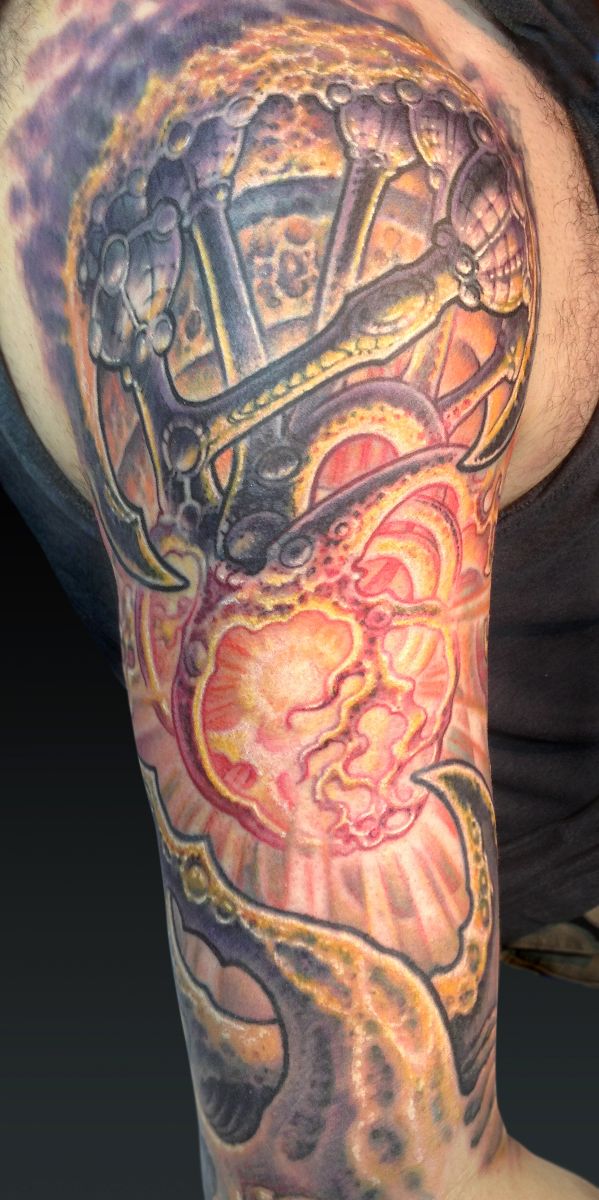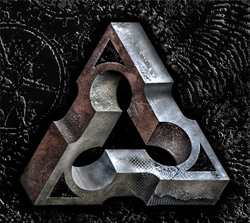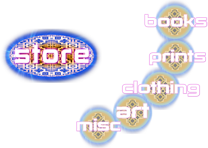Ask Guy January 3 2014
Q: from Wile: As a new tattooer to the industry, how do you go about sticking to a style when it isn't popular in your area? I'll give you my situation as an example. In my area traditional tattoos are what everyone wants to get; however, I want to do more of a newschool and bio-organic style of tattooing. How do you go about talking a potential client into letting you do that specific style on them when you have not done much of it before?
A: This is one of the fundamental challenges in building a tattoo career, and the answer isn't a simple one, but instead consists of a whole new approach to your career and your relationship with your clients. Remember that trust is crucial to the tattooist/client relationship, that trust isn't something that comes cheaply... and that the more innovative and large-scale of tattoos you are wanting to do, the higher level of trust you'll need to earn from them.
When I started my career I had a few ideas of what I wanted to do, but could never have anticipated the style I would develop over the course of the following years. I was attracted to Giger's paintings and had seen a few good examples of Giger-esque work done on skin, but it was very far from being a well-known style of tattooing. So I was definitely keen on biomech even then, but had to learn tattooing by doing the normal stuff: Dragons, barbarians, hearts, and more hearts.
I was fortunate enough to be learning from Bob Oslon, who was very open to me traveling, mixing with other artists, bringing new ideas back to the shop. So even while I was tattooing more mundane subjects I could play around with effects and tricks that I was interested in. Want an anchor? Let me experiment with chrome. Dragon? I'll do some crazy texture in a few places. Gradually I built up a decent number of clients walking around Chicago with my work, and even though it consisted of a lot of fairly conventional subject matter, you could already see my style emerging. Since tattooing in the pre-internet world was largely by local word of mouth, I quickly developed a decent sized local clientele who were interested in seeing me get more and more experimental with my work.
Reputations spread differently now in the information age, but the important stuff is the same as it was back then: Do high quality work with a unique twist, and make sure your clients have a positive experience when getting the piece. Nurture good relationships with your clients and they will develop plans for larger and more customized work. This way you won't have to talk anyone into anything- they'll be asking for your most innovative work, and you'll be stretching yourself as far as you can when given the opportunity. That's when your portfolio will really start to grow.
But first you need to get the idea across. It's one thing to show them other artists' work in newschool or bio styles, but another thing entirely to show them drawings that you've done in these styles. Get some photos of blank body parts and sketch designs on them, show how they would flow on the body. Do a variety of paintings or drawings in bio or newschool, and hang them around your workstation. Get really good at the style, build up a library of work, and if enough of your clients see it, it will start catching on.
I can't emphasize the drawing part enough- all the rest hinges on that. Draw the stuff daily. Fill sketchbook after sketchbook with it, even if a lot of the sketches are quick and rough. Make it a style that comes naturally to you, and the drawings that result will get nicer and nicer. If you have any hope of getting people interested in committing their skin to your art, make it irresistibly cool. That comes from a lot of hours, a lot of repetition, a lot of time looking at your drawings, evaluating them, doing new ones based on your observations. Don't wait for a client request in order to do a drawing- this will keep your style from going anywhere. If you find a style interesting enough and truly want to pursue it on skin, you should have no problem giving some time to it every day on paper.
As far as building your portfolio of actual tattoo work, you may have to give a few sweet deals to build up enough large-scale examples. That's just part of the journey. At the same time, don't rush into anything; it's always best to develop your style and approach step-by-step from small projects into larger ones. I think there are very few things more depressing than large-scale, poorly planned, quickly executed biomech. So take it easy and find a pace that works for you. You'll get there.
Q, from Nick: I've been tattooing seven years, but have been an artist all my life. I know I'm more artistically capable than what I'm having to do on a daily basis. Any tips on how to boost my name in a specific style? Also, I have a relatively natural depth perception, but you are one of the masters of depth; any tips or tricks to help train my mind in a depthier sense? Also, if I shake your hand will I get special powers?
A: For the first part of your question, take a look at the answer to Wile's question above. I'd like to go into a little more detail about that, especially the promotional end of it. While doing lots of drawings and developing a good local clientele are crucial, there comes a point where it's helpful to develop a larger reputation in the tattoo world. This not only opens up opportunities for travel, guest spots, conventions, magazine features and such, but also makes your name more valuable to your local clientele and brings new clients from a larger and larger surrounding area.
Building and maintaining a solid portfolio and strong online presence are not trivial undertakings. Many artists feel that their work should speak for itself and don't want to spend the energy on the promotional end. I've gone through phases like this. But if you are wanting to find clients for a specialized style, it's important to cast a wide net and try putting your best pieces in front of as many eyes as possible.
The portfolio comes first. It drives me crazy to see so many artists who no longer keep a portfolio but just have a few tattoo photos on their phone scattered in between pictures of their dog. This has become very typical and if it's your approach, don't expect much.
Especially while building up your career in the very beginning, where your style is still clearly developing, it's critical that you update your portfolio often. Every time you finish a significant new piece, add it to your portfolio and remove the weakest piece. Try keeping a portfolio with a dozen tattoos and 8-10 drawings or works in other media, which can help to demonstrate the direction you want to go next with your tattooing. Keep a printed version of your portfolio with you at your workstation or convention booth, and make it something that you are excited to show. This alone can bring clients around to more exciting tattoo ideas.
In addition, you'll want an online version of the same portfolio, either on Facebook or at your shop website. That way, if you're wanting to show someone your work and all you have is your phone, you can link to your online portfolio and let them browse it instead of fishing through family pictures for your tattoo photos. You can also easily send people links to your online gallery. So there's the first part of your question; as far as the second part goes, the answer is probably not what you'd expect.
I've been a Cyclops all my life. I was born with severe stigmatism in my right eye, which is functionally blind. So I don't have stereo vision like most people. I can only guess what it might be like to live immersed in a hologram- for me, it's a snapshot. So I have to think about depth a lot more than the rest of you. I sense depth by moving my head back and forth to produce a "false parallax", where I can sense the relative distances of objects depending on how much they appear to move. But I also rely on many other cues: Cast shadows, focus, shape overlap, atmospheric haziness; there are many ways to sense and convey depth once you start looking at it as a puzzle.
Simulating depth is a matter of fooling the eye into seeing overlapping layers, then using tricks to separate these layers from each other. In the piece shown here you can see a lot of my depth tricks in action. For starters, I'm using line weight to give priority to the biggest shapes, which by itself gives the overall tattoo more structure and clarity. In places, though, the lines are not always black- for example, see how some of the pipes near the top pass behind another pipe and get lighter as they get close to the foreground pipe. This is a great way to make shapes separate. In other places, such as the heart, the black lines blend into red ones to give the heart more of a sense of luminosity.

The light and shadow of the piece are structured to convey an overall sense of volume. This is not a quick trick, though, and comes from having a comprehensive grasp of how light and shadow work, enough so that imaginary spaces can be drawn and shaded correctly. If you want to develop this skill set, start drawing real objects with light and shadow playing over them. Draw them a lot, build your own references from clay and found objects, and keep drawing. An intuitive understanding of light will come, but only with a lot of effort. Light rays added to the piece give the design more of a sense of central focus and increase its luminosity.
Texture is also used to create depth- by adding light texturing to the foreground shapes and keeping the background elements more smooth and simple, the layers will naturally separate. One of the most fundamental tools for creating a sense of depth, though, is in how the shapes overlap each other, establishing a foreground, middleground and background. But you can see how by itself this isn't enough: Shape placement is further strengthened by lighting and shadow, which is reinforced more by the use of foreground texture, strengthened by the selective use of line weight, and finalized by the use of bright yellow and tight white highlights in the foreground only. It's actually a whole suite of tools being used together in careful balance to create this depth effect.
So I can't offer you any special powers, just some hints for building these skills yourself. And I definitely don't recommend gouging out an eye- being a Cyclops comes at a high price. Parking a car can be a nightmare when you can't tell the distance of surrounding objects. And try catching a ball- it's a joke. But I wouldn't trade my messed-up vision for anything.























